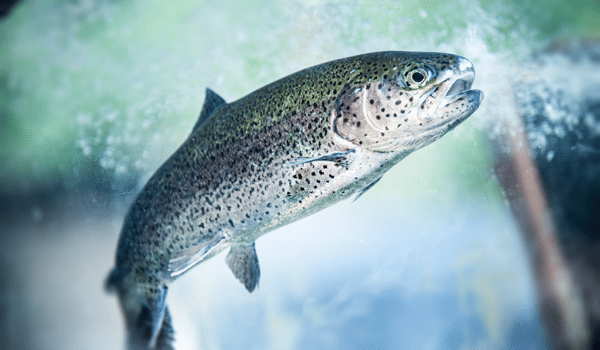Salmonids are the main species farmed in Europe with Norway leading the way (FAO, 2022). These high value species are carnivorous and many of them are anadromous which involves a juvenile rearing phase in freshwater and a grower rearing phase in saltwater (FAO, 2022). As the mineral composition of these waters differs, it will be necessary to take this into account when formulating the aquafeed.
Seawater has an average of 400 mg/L calcium and 1,350 mg/L magnesium while in freshwater, Ca and Mg concentrations are around 2 to 60 mg/l and 1.2 to 36.4 mg/l respectively. The concentration of P in water remains low, at around 0.3-0.6 mg/L (Boyd, 2001; Lall, 2002). Moreover, they live in cold water conditions (T ~5-17°C) (FAO, 2022). Diets will therefore be adapted with moderate protein and high lipid and energy inclusion.
Furthermore, Salmonids reach commercial size (~350g to 2-3kg+) after 1,3 to more 3 years in average. FCR mean is close to 1 (FAO, 2022). Lastly, the rearing systems use to produce these target species are mainly raceways, RAS and Open water cage and several of them can be used for the same specie but at different life stages. Therefore, is it very important to consider this last parameter and formulate in consequences to incorporate the right ingredients to boost fish performance while limiting water pollution (P, N rejects, etc.).
